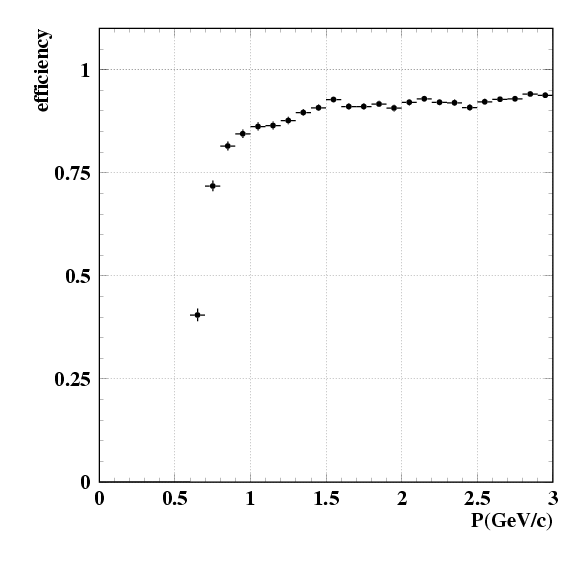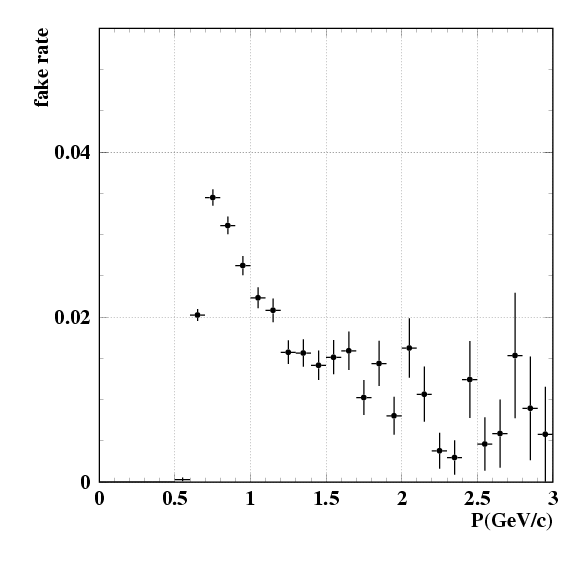



Next: Detector Solenoid and Iron
Up: Performance
Previous: detection
Contents
Cosmic rays were used to measure the detection efficiency and
resolution of the super-layers. The momenta of cosmic muons were
measured by CDC with the solenoid field of 1.5 T. Below 500 MeV/c, the
muon does not reach KLM. A comparison of the measured range of a
particle with the predicted range for a muon allows us to assign a
likelihood of being a muon. In
Fig. ![[*]](./icons/crossref.png) the muon detection efficiency versus
momentum is shown for a likelihood cut of 0.66. Some fraction of
charged pions and kaons will be misidentified as muons. A sample of
the muon detection efficiency versus
momentum is shown for a likelihood cut of 0.66. Some fraction of
charged pions and kaons will be misidentified as muons. A sample of

 events in the
events in the  collision data was used to determine this fake rate. The fraction of
pions which are misidentified as muons is shown in
Fig.
collision data was used to determine this fake rate. The fraction of
pions which are misidentified as muons is shown in
Fig. ![[*]](./icons/crossref.png) , again with a muon likelihood cut of 0.66.
The solid points with error bars are the measured data and the
histogram is the result of a Monte Carlo simulation. Above 1.5 GeV/c
we have a muon identification efficiency of better than 90 % with a
fake rate of less than 5 %.
, again with a muon likelihood cut of 0.66.
The solid points with error bars are the measured data and the
histogram is the result of a Monte Carlo simulation. Above 1.5 GeV/c
we have a muon identification efficiency of better than 90 % with a
fake rate of less than 5 %.
Figure:
Muon detection efficiency versus momentum in KLM.

|
Figure:
Fake rate versus momentum in KLM.

|




Next: Detector Solenoid and Iron
Up: Performance
Previous: detection
Contents
Samo Stanic
2001-06-02
